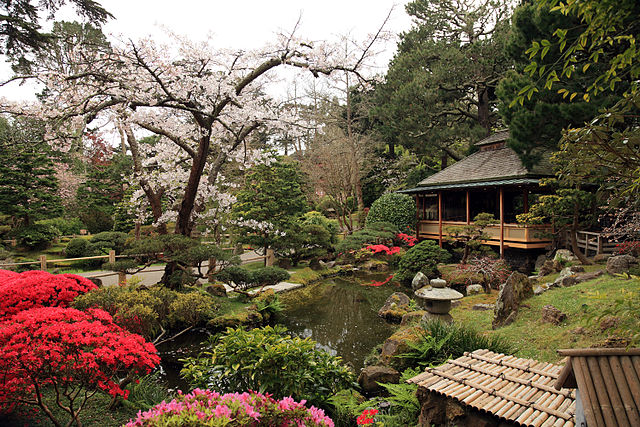
The Japonese Garden of Buenos Aires is an Argentine Japanese Garden located in the Tres de Febrero Park neighborhood of Palermo, city of Buenos Aires.
The Japanese garden was built with the contribution and efforts of the Japanese community in 1967, as a testimony of the first visit to Argentina of a member of the Japanese Imperial family, the Crown Prince Akihito and Princess Michiko. This garden is an emblem of the relationship between Argentina and Japan, donated by the community through the Embassy of Japan in Argentina to the municipality of the city of Buenos Aires in 1967, and accepted by the Ordinance No. 22.372/67 and Decree Number 4935.
Since 1989 the Japanese Argentine Cultural Foundation in agreement with the Government of Buenos Aires is responsible for the administration of the Japanese garden and increase dissemination of Japanese culture through conventions that were inside and outside of the country. In 2004, it declares tourist attractions to the garden by the Undersecretary of tourism of the city of Buenos Aires according to registration Number 742 SSTUR. Continuing with the declarations in the year 2006.
Is the opportunity to meet and learn Japanese culture, have entry free to the garden under 12 years of age and pensioners/retirees 65 and older, in the same way, the primary and secondary level schools, can make visits free. In addition once a week (including one Saturday per month) Argentines and Argentine residents have free entry presenting document without exception. One of the premises of the Japanese garden is the active.
In addition to the garden, there is a building containing a center of japanese cultural activities, an exhibition on Japanese culture (kimono, paiting, origami, japanesedishes), a restaurant, nursery where you can buy bonsai and other species of plants such as sakura and orchids. There is also a store selling varieties of items, where you can get your name written in japanese.
All the elements that are looking for harmony and balance. Bridges are symbols. There is one very curved and extremely difficult to cross, called Dios bridge that represents the path to paradise. Another called Truncated bridge that leads to the island of miracle cures. And the bridge Zig Zag, or also known as the bridge of decisions.
In addition to the old native as the chick and the Palo Borracho trees, you can find also a variety of Japanese plants, including Sakura, doing and azaleas. The Park also has a large number of tents of various colors, which can be fed buying food to balanced in the Center.
It is a beautiful tourist place which is most visited those who do not know it is advisable to know and take a stroll through the Japanese garden has a beautiful landscape.






